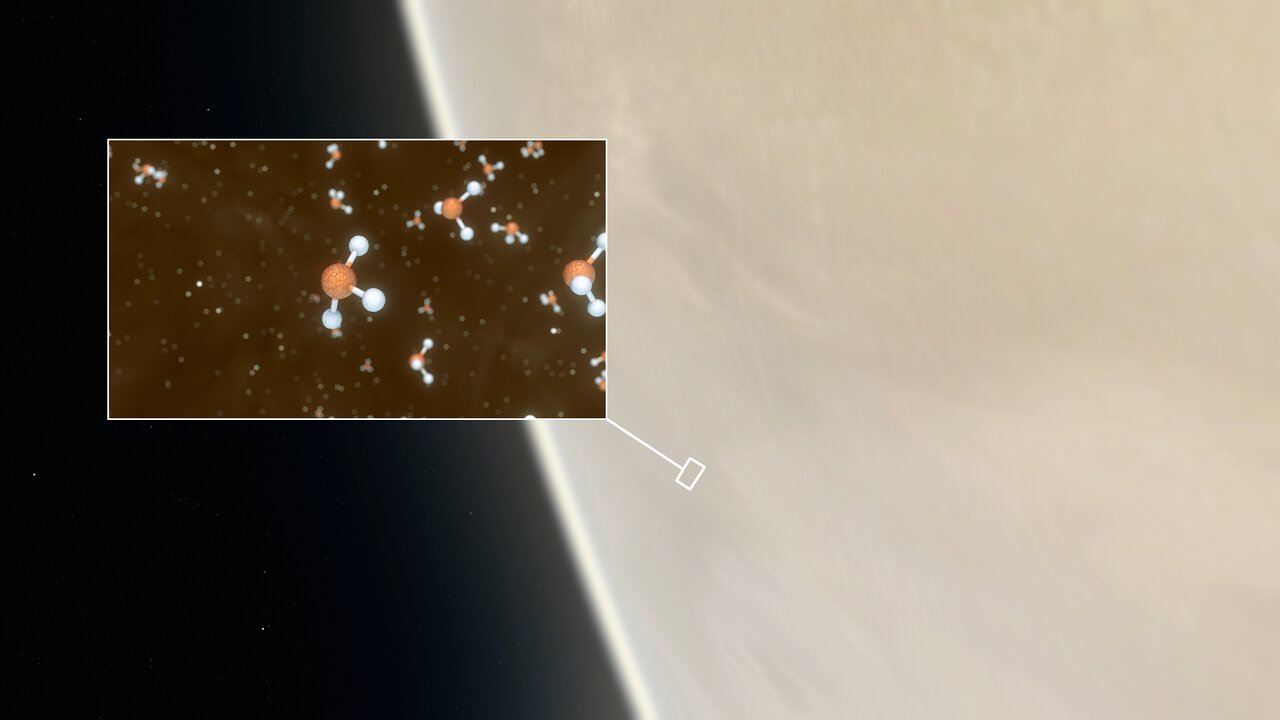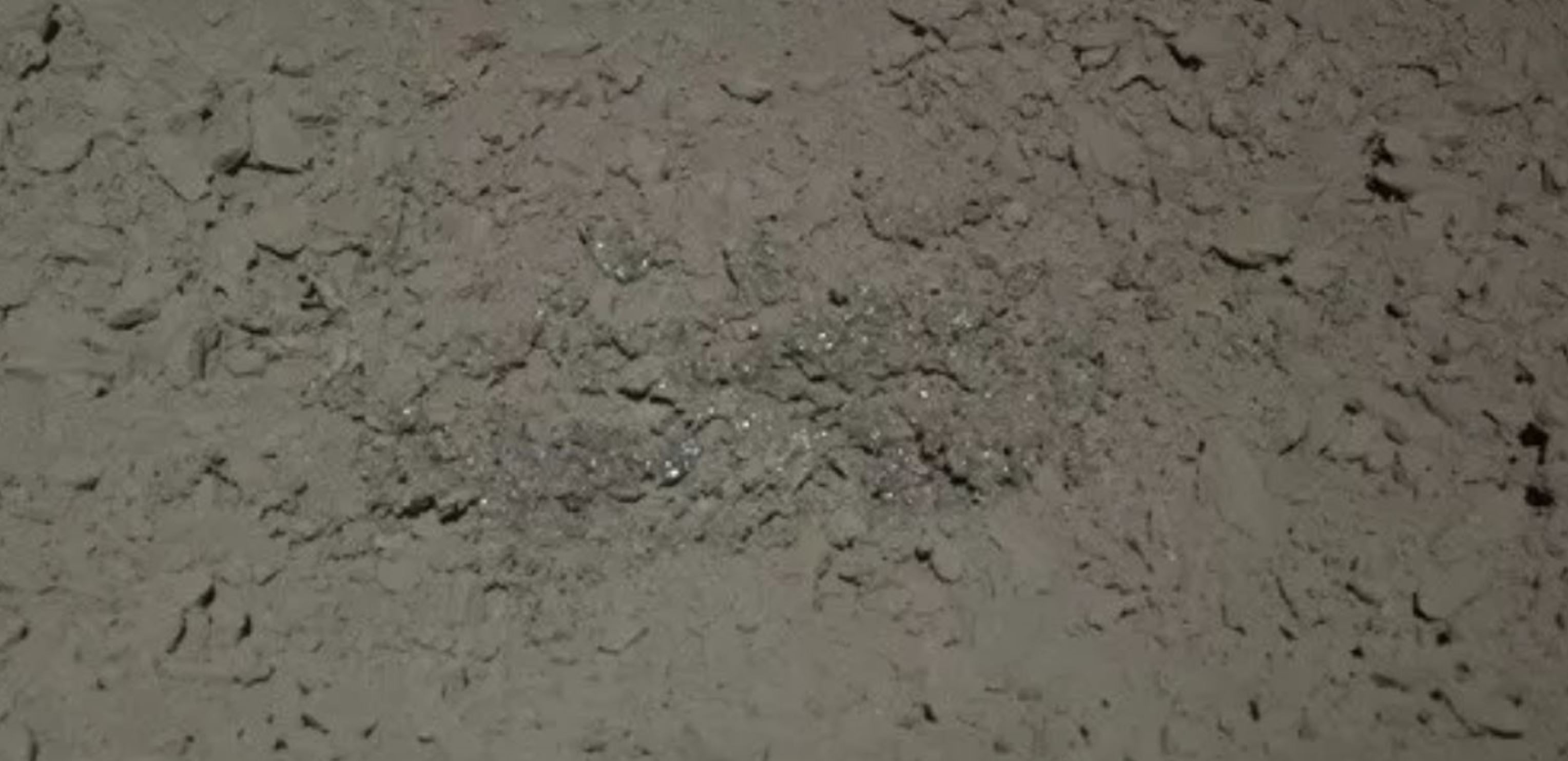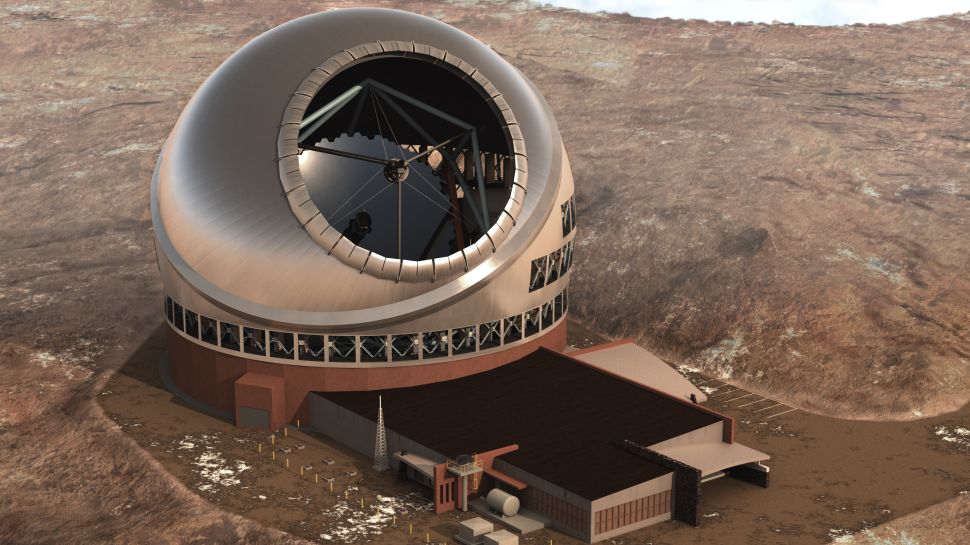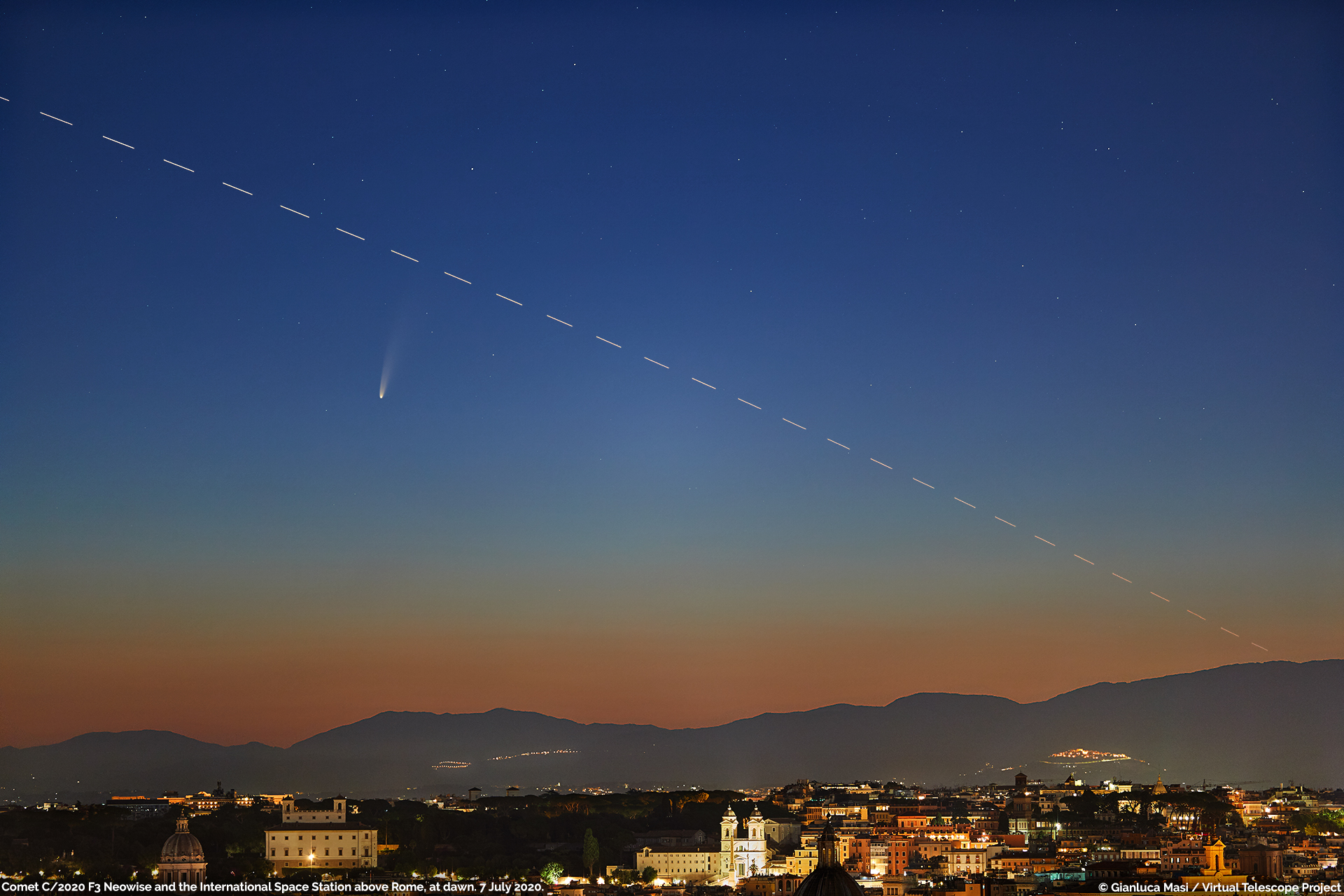The 10 biggest space discoveries and stories of 2020
The coronavirus pandemic affected many sectors of astronomy and spaceflight.

For many reasons, 2020 may be a watershed year for society and science. Astronomers and space agencies spent the year managing the repercussions of the coronavirus pandemic. They also made breakthroughs in new technologies and bid farewell to several important projects.
This year saw a new age of sample-retrieval missions, protests against a telescope, an incredible visit from a dazzling comet and the ''great conjunction'' of Saturn and Jupiter.
Here's our look back at the 10 biggest space stories of 2020.
Coronavirus affects space science
The coronavirus pandemic affected many sectors of astronomy and spaceflight. Universities, space agencies and ongoing projects adapted to cope with the new reality as countries worldwide took measures to prevent the spread of the respiratory disease COVID-19. Classrooms turned virtual, astronomical conferences changed format and higher-learning institutions braced for financial troubles caused by the virus' effect on the economy.
Social distancing measures affected the field in many ways. Space agencies like NASA ordered their employees to work from home. Projects like the Event Horizon Telescope, which captured the first-ever photo of a black hole, canceled its 2020 observations. Satellites continued their observations, showing desolate streets and short-term changes to emissions caused by human activity. Social movements like the protests against the construction of the Thirty Meter Telescope in Hawaii also halted to keep the elders of the community safe from the disease.
Spacecraft like NASA's asteroid sample-collecting OSIRUS-REx mission also had to delay their most important maneuver -- the material retrieval from asteroid Bennu -- because of limitations caused by virus mitigation efforts on Earth.
The virus' contagious and deadly nature was apparent to space agencies. On May 6, the head of Russia's human spaceflight program died just weeks after testing positive for coronavirus. In late April 2020, engineers at NASA's Jet Propulsion Laboratory in California developed a new ventilator called VITAL in response to limited ventilators for COVID-19 patients.
Get the Space.com Newsletter
Breaking space news, the latest updates on rocket launches, skywatching events and more!
Iconic Arecibo Observatory collapses
This year, the National Science Foundation (NSF) said farewell to the iconic Arecibo Observatory in Puerto Rico after two major cable failures led to the radio telescope's collapse. The 57-year old structure was once the largest radio dish telescope in the world, and researchers have used its capabilities to make significant breakthroughs in astronomy. The Arecibo Observatory also served as the dramatic backdrop to films like "Contact" and "Goldeneye."
The facility suffered two cable failures this year, and then in early December, the suspended platform above the radio dish came crashing down.
The news about Arecibo's structural damage and subsequent decommissioning was disheartening for the local community, too. Field trips to its visitors' center are a ''rite of passage'' for Puerto Rican children.
A boom in sample return missions
A new "golden age" of sample retrieval missions is here.
In October 2020, NASA's OSIRIS-REx mission to asteroid Bennu successfully stowed away pieces of the space rock to bring to Earth. On Dec. 7, samples of asteroid Ryugu collected by JAXA's Hayabusa2 mission reached Japanese scientists. A capsule with the rocky material descended to the Woomera Prohibited Area in Australia on Dec. 5, and the spacecraft went back out into the solar system on an extended mission. This spacecraft's predecessor, Hayabusa, was the first mission to bring back pieces from an asteroid to Earth.
China's Chang'e 5 mission also performed a sampling rendezvous with the moon in late 2020. The first lunar samples that came to Earth were brought down by NASA's Apollo program.
China analyzes weird substance on moon's far side

Chinese scientists published an analysis of a strange substance they detected on the far side of the moon. The Yutu 2 rover from China's Chang'e 4 mission found the gel-like substance in July 2019, and this year, Chinese researchers described the material in a new paper.
The glassy substance is a dark green color and looks like breccia, or broken fragments of minerals that were cemented together. Information about the material was gleaned from Yutu 2's panoramic and hazard avoidance cameras and the rover's Visible and Near-Infrared Spectrometer (VNIS) instrument. Researchers wrote that the material may have formed in an impact or a volcanic eruption.
Phosphine on Venus
On Sept. 14, a team of astronomers announced that they had detected the chemical fingerprint of phosphine in Venus' atmosphere. This compound has been found near microbes on Earth and some people argued it could be a biosignature, an indication that perhaps some life form high in Venus' clouds was able to survive the planet's extreme environment.
Astronomers detected the phosphine chemical signature using the James Clerk Maxwell Telescope in Hawaii and the Atacama Large Millimeter/submillimeter Array (ALMA) in Chile. The levels of phosphine detected perplexed researchers because Venus, like Earth, has many molecules with oxygen in them, which should destroy phosphine quickly.
Skeptics are wary of making the signs-of-life connection. But the discovery nevertheless fascinated people around the world.
Solar Orbiter launches into space
In February 2020, a new solar mission from the European Space Agency (ESA) and NASA launched into space. The Solar Orbiter mission is designed to study the sun up close to understand the bubble that wraps around the solar system.
The sun influences a region in space called the heliosphere. The solar system is within it, and beyond this region is interstellar space. To understand the heliosphere, Solar Orbiter will closely examine the sun's polar regions. The mission's innovative heat shield can withstand temperatures up to 970 degrees Fahrenheit (520 degrees Celsius).
Related: World's largest solar telescope produces never-before-seen image of our star
Protests over the Thirty Meter Telescope

Native Hawaiians called kia'i, or protectors, continued their protests against the construction of the 160-foot-tall (49 meters) Thirty Meter Telescope (TMT) this year. TMT came about in 2003 when a nonprofit partnership formed between two California universities and counterparts in Japan, China, India and Canada.
The kia'i formed an encampment to protest the start of construction in the summer of 2019. Maunakea, they argue, is a sacred religious site to Native Hawaiians and TMT would be a massive new addition to the summit which is already populated by about a dozen astronomical observatories.
Goodbye, Spitzer Space Telescope
On Jan. 30, NASA's Spitzer Space Telescope went offline after spending more than 16 years taking observations of the universe. The mission team put the spacecraft into permanent hibernation to end the mission; team members think the spacecraft will eventually break apart in a debris field.
Spitzer's former Project Manager Suzanne Dodd said in a Jan. 23 panel about the telescope that it had uncovered a "cornucopia" of cosmic details.
Spitzer collected data using a technique called spectroscopy. This allowed scientists to study the universe using the infrared part of the electromagnetic spectrum. Scientists used infrared data to learn about space dust and particles that don't shine in visible light the way stars do, thereby providing a more complete picture of the universe.
Hello, Comet NEOWISE

Comet NEOWISE was discovered in March 2020 by NASA's NEOWISE mission and dazzled spectators on Earth in the weeks that followed. The icy comet made its closest approach to the sun on July 3 and survived the encounter, allowing skywatchers to marvel at its impressive tail as itn headed back toward the outer solar system. Comet NEOWISE won't be back for another 6,800 years.
In addition to making it more beautiful, the comet's brightness allowed astronomers to collect high-quality data on the object. NASA officials said that the last comet to put on such an impressive show was Hale-Bopp in 1997.
Related: Amazing photos of Comet NEOWISE from the Earth and space
Plus: Hubble telescope catches stunning view of Comet NEOWISE after its spectacular summer sky show
Great Conjunction of Saturn and Jupiter
The final show-stopping celestial event of 2020 was the "great conjunction" of Saturn and Jupiter on Dec. 21, which was also the date of the Northern Hemisphere's winter solstice.
Jupiter and Saturn could be seen next to each other low in the evening sky shortly after sunset. They were separated by just one-tenth of a degree. Their proximity to one another in the sky has not occurred in more than 400 years.
A stunning end to this historic year. A Planet SkySat captured the great conjunction of Jupiter and Saturn - the closest night sky pass of the two planets in nearly 800 years.And on that note, we’re out! Happy holidays from the Planet team. pic.twitter.com/Is4xQTtaIdDecember 23, 2020
Conjunctions between these two planets happen about once every two decades, when Earth, Jupiter and Saturn form a line through space. Viewers fortunate enough to have clear skies when observing the conjunction could also see the twinkle of Jupiter's Galilean moons.
Follow Doris Elin Urrutia on Twitter @salazar_elin. Follow us on Twitter @Spacedotcom and on Facebook.
Join our Space Forums to keep talking space on the latest missions, night sky and more! And if you have a news tip, correction or comment, let us know at: community@space.com.

Doris is a science journalist and Space.com contributor. She received a B.A. in Sociology and Communications at Fordham University in New York City. Her first work was published in collaboration with London Mining Network, where her love of science writing was born. Her passion for astronomy started as a kid when she helped her sister build a model solar system in the Bronx. She got her first shot at astronomy writing as a Space.com editorial intern and continues to write about all things cosmic for the website. Doris has also written about microscopic plant life for Scientific American’s website and about whale calls for their print magazine. She has also written about ancient humans for Inverse, with stories ranging from how to recreate Pompeii’s cuisine to how to map the Polynesian expansion through genomics. She currently shares her home with two rabbits. Follow her on twitter at @salazar_elin.









